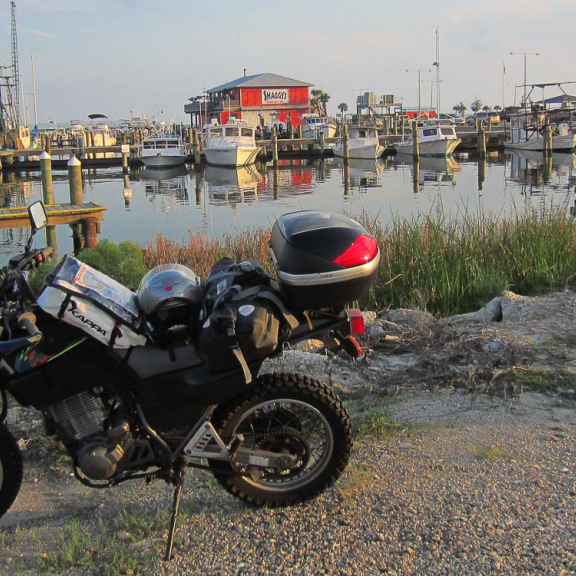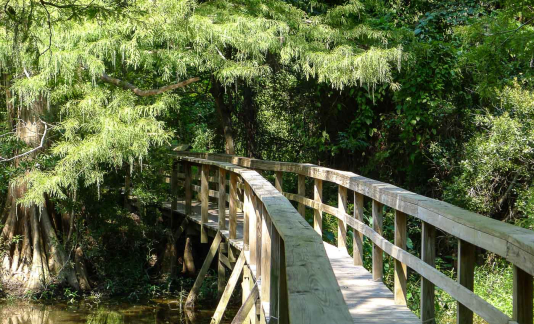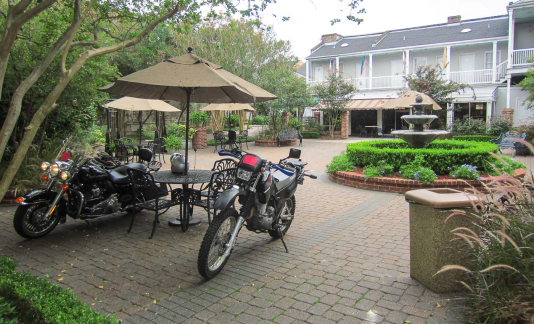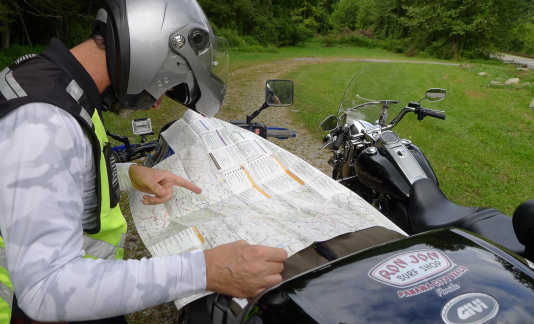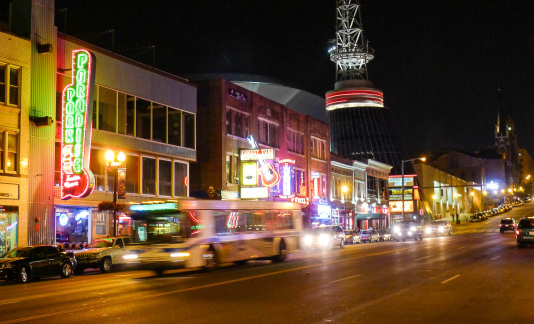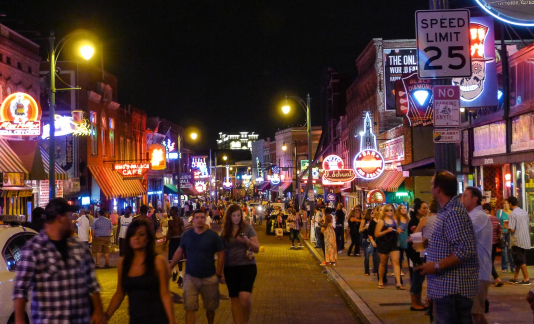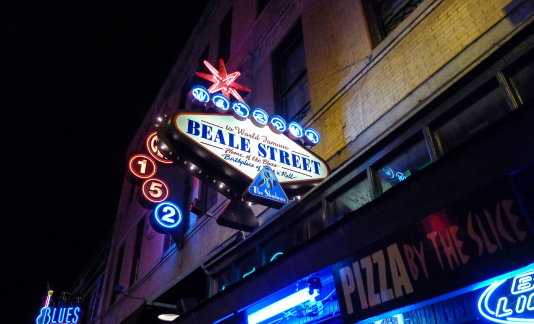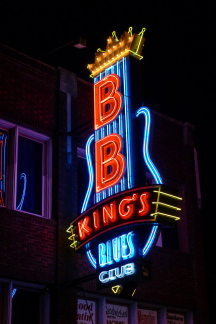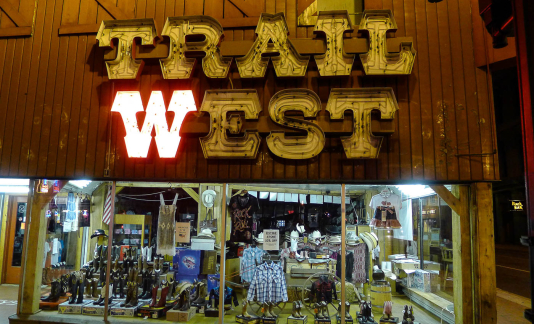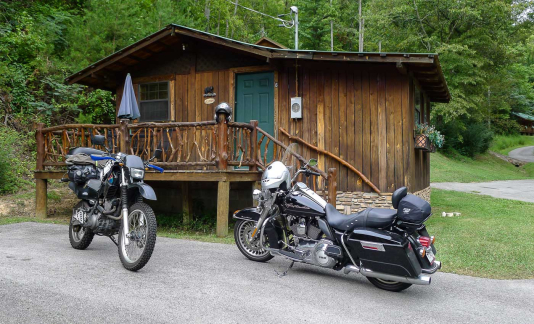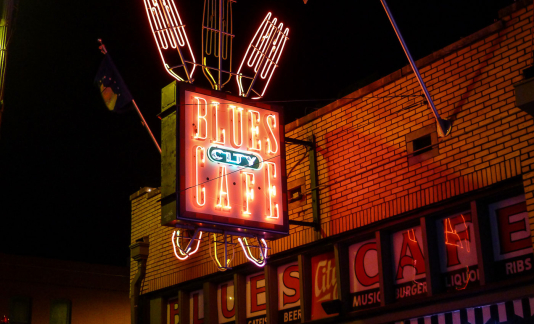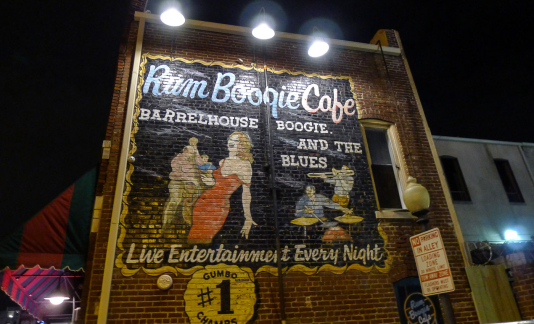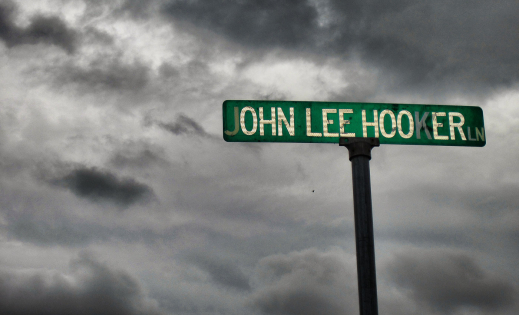Motorcycles and music
Motorcycle ride in the South of United States.
Here is the story of Peter, one of the two protagonists.
This story comes a long way. I was in the Army in Italy, back in 1994, when I met Sandro. We instantly bonded over our common passion for motorcycles and music. We kept in contact along the years even if he now lives in Brazil and I live in the United States. Sure thing none of us ever forgot the dream that we wanted sooner or later turn into reality: ride the Route 66 from Chicago to Los Angeles on a pair of Harleys. Right now we are still working on that project, but last Summer we kind of put together a dressed reharsal, riding a huge loop of 2000 miles (about 3200 Km) across the Great South of the United States. We wanted to explore the cities and places that made and still make the history of American music, from Blues to Jazz, from Country to Rock & Roll. A 10 day ride from “my” Atlanta to New Orleans, the Mississippi Delta, Memphis, Nashville and back. Our rides: my old 1995 Yamaha XT600E and a rental Harley-Davidson Road King for Sandro.
On the Way to New Orleans
When I traced our itinerary I made sure to stay away as much as possible from those boring interstates, favoring highways and backroads instead – where you can still find traces of the true American spirit.
After reaching the Northwestern coast of Florida (the so-called Panhandle) we entered Highway 90 and pointed straight toward New Orleans under an almost constant and merciless rain.
A few miles down Highway 90, across the bridge over Bay St. Louis, we finally entered Louisiana. All my friends know how much I love this State and its most significant city, New Orleans. But reaching “The Big Easy” and its sleepless nights also meant riding through miles of marshlands and bayous and being splattered by thousands of “Love Bugs” in the process. The name derives from the fact that in late August they fly coupled to their mates until they die… very romantic, unless you have to clean their mess from your helmet and gear.
Once we reached New Orleans, music finally took over the reins of our trip. The main attraction is the French Quarter (locals call it the “Vieux Carrè”) and its joyful Bourbon Street. This street, who witnessed the birth of Dixieland and Jazz, had also welcomed for years the finest Bluesmen in the Country.
That was until 1994, when the State of Louisiana opened to gambling and the casinos wanted most musicians at the streets’ corners to be swept away.Regardless, the music scene is still very active in the East side of the Quarter, toward the Esplanade. We watched some local bands live but we were a little disappointed as most of them now play a blend of Funk and Pop. Energetic, but not exactly what we were looking for. New Orleans alone and its culture and food would need several pages but… Besides music we mostly hunted for local food: Gumbo, Jambalaya, Crawfish, Ètouffèe and Po’Boy sandwiches. Too lazy in the morning to go get a “beignet” and “cafè au lait” at the famous Cafè du Monde, we made up for it with a beautiful ride on the Northern shore of Pontchartrain Lake. The quickest way to get there from the city is riding the Causeway, a 22 miles long bridge on low pillars that splits the lake in two. In the area of Mandeville there are several natural parks and wildlife sanctuaries nested in the swamps that are really worth a visit.
From the Mississipi Delta to Memphis, the City of Elvis
After leaving New Orleans, we rode 280 boring miles (450 Km) of Interstate 55 heading North. They really felt like 1,000, but the reward was waiting for us after about an hour past Jackson, the capital of Mississippi state. Once we got off the Interstate and turned on Highway 17 we found ourselves in the heart of the Mississippi Delta, the cradle of modern music as we know it. I want to clarify a point here: I refer to the Mississippi Delta not as where the Mississippi river reaches the Gulf of Mexico (farther South, in Louisiana) but as a specific area of the state of Mississippi, roughly a triangle between the Mississippi and the Yazoo rivers, stretching all the way up to Memphis.
This area is blessed with a uniquely rich soil that made it the World center of cotton, with plantations that used thousands of African slaves since the end of 1700. Blues music derives from the rhythms and chants of these African people, who sang them to pace their work in the cotton fields.
In the followng 80 miles we cut through a surreal flatland, made of endless cotton fields briefly interrupted by small towns and woods covered by a blanket of intricated vines. After a quick stop in Greenwood, where Robert Johnson is buried, we finally reached Clarksdale, late at night.
The name alone is enough to send a chill down the spine of any music lover: Clarksdale, the home of the Delta Blues. Here Highway 61 and Highway 49 cross, two roads celebrated by the likes of Bob Dylan and Eric Clapton in their songs. The legend says that right at this crossroad Robert Johnson made his pact with the Devil…
The few bars and attractions are on Second Street. In spite of being the hometown of John Lee Hooker and Ike Turner, and regardless of the fact that many legends of the Blues like Muddy Waters, Sonny Boy Williamson II and Robert Nighthawk lived here at least for a while, Clarksdale doesn’t really offer much (unless you happen to be here during one of the few blues festivals). There is the beautiful but small Delta Blues Museum, the awesome Blues Town Music shop (a tiny treasure chest holding some of the best musical instruments ever made in America), the Riverside Hotel and the Ground Zero Blues Club. The hotel is where most Blues musicians stop when they are in town, while the Ground Zero is a juke joint owned by the Hollywood star Morgan Freeman, who hails from the near Memphis.
After Clarksdale we headed to Memphis. First stop: Graceland, the famous mansion/museum where Elvis Presley used to live. The $36 ticket (plus an extra $10 for the parking) gives access to the villa and Elvis’ cars and motorcycles collections, plus his two jet airplanes. The tour takes about two hours and I would consider it a mandatory tribute.
Memphis is exactly how I expected it: laying by the Mississippi river, it blends the sweet spirit of the Great South with the hard reality of any American metropolis. Beale Street, a Holy Grail for any music lover, is a diamond stuck on a rough wood plank, made of defying stares and rusty cars with big shiny wheels, blasting rap music from their speakers. The stretch with all the music clubs only extends for a copule of blocks (including the W.C. Handy Park – dedicated to the early 1900 Godfather of Blues).
Memphis is definitely not the safest city on Earth, and the checkpoints and metal detectors that control the access to Beale Street are there to prove it. After the initial uncomfortable moment, the lights and the sounds of the street hit you hard: the names of the music clubs are a matter of legend, like the superb B.B. King’s Blues Club, owned by the guitar legend. But the real gems are squeezed in between the big name clubs: small bars and joints where the vibe of the original Black Music is still alive, much like it was in New Orleans up to the first half of the 90s.
Be also aware that the many gift shops are not just tourist traps. They often offer respectable CD and vinyl collections besides the obvious t-shirts and other funny stuff, like some toilet top in the shape of a guitar…
Nashville
The world capital of country music
Nashville is a 200 mile ride from Memphis, heading East through Tennessee.
I originally included Nashville as a mere tribute to a music genre that I don’t necessarily like but it’s one of the supporting pillars of American music. My aim was to visit the Gibson Guitars Factory and quickly check out some of the headline music clubs, kind of “been there, done that”. But once there I was truly surprised, in both a negative and a positive way. First of all the Gibson factory is not accessible, not even the Custom Shop. The only visitor friendly facility is, funny enough, in Memphis. Second, the music scene: Nashville was far and wide the best stop of our trip. On Broadway, the heart of “Music Row”, there are a gazillion live music clubs and joints, alternated with Western style clothing stores and guitar shops. I was expecting a ton of Country moans but I must admit we listened to some top notch Rockabilly (to Sandro’s delight), Bluegrass and Hillbilly, a music that blends the melody of Country with the rhythm of the Blues, somehow representing the roots of Southern Rock.
Leaving Nashville it was about time to head back to Atlanta but not before dedicating the last few days to some awesome riding up and down the Smoky Mountains. Nested in between Tennessee, Georgia and North Carolina there are some of the most beautiful riding roads in America, like the Tail of the Dragon (300 plus turns in 11 miles), the Cherohala Skyway or the famous Highway 60. A quick tip: make sure you ride them on a weekday. On weekends these roads are packed with racing wannabes on their hypersport bikes and a swarm of cops ready to bust them!
The soundtrack
Dedicated to any lover of American music, here is a soundtrack that will take you back to the places we visited during our roadtrip. Southern Rock, Swamp Boogie, Dixieland, Delta Blues, Rock & Roll, Country… Six outstanding albums for six muscial genres very differnt yet so tighly tied together.NASHVILLE: COUNTRY
Johnny Cash – “Live at Folsom Prison”
Johnny Cash is more than just the Man in Black of Country Music, way more. He is at the roots of Rockabilly and in his music there is a lot of Blues, Gospel, R&R and Folk. He was a devoted Christian and a Bible student, yet again he was the orignal prototype for the Rock & Roll rebel, always ready to point his finger at the many contradictions of American lifestyle.
“Walk the Line”, the movie featuring Joaquin Phoenix about his life and career, is a must see.
MISSISSIPPI: DELTA BLUES
Robert Johnson – The Complete Recordings
Robert Johnson’s life is wrapped up in mystery. Even if he died in 1938 his influence over modern music is huge. Hard to believe it after listening to this acoustic Blues album, recorded in two sessions between 1937 and 1938. Howerver, people like Eric Clapton, Keith Richards and Jimmy Page always mention Johnson’s startling lyrics and hypnotizing music as their main inspiration.
NEW ORLEANS: DIXIELAND
Louis Armstrong – All Time Greatest Hits
Picking one single album to showcase this unique music genre is almost impossible. Dixieleand later developed into modern Jazz, and its name is also used to indicate the South of the United States. This genre is still played a lot in New Orleans by several brass bands and Louis Armstrong, the most famous son of “The Big Easy”, started playing Dixieland on his way to become the Godfather of Jazz.
GEORGIA/ALABAMA: SOUTHERN ROCK
The Allman Brothers Band – Live at Fillmore East
Arguably the best live album ever, it showcases the skills and the true soul of the band which in my opinion best represents the Great South. A great Duane Allman, at the very top of his carreer and just a few months before his untimely death, cuts some of the most memorable slide guitar licks and solos of all time.
LOUISIANA: SWAMP BOOGIE
Slim Harpo – Tip on In
Slim Harpo was a singer/harp/guitar player. He succesfully blended the melodies of Cajun music (played by the people of the swamps) with the more urban Boogie and Voodoo Blues sounds of New Orleans.
MEMPHIS: ROCK & ROLL
Elvis Presley – Elvis the King
Elvis is the link between Black Music and white Americans, instrumental to the spread and success of Rock & Roll. Presley have been able to create his own immortal blend of traditional Delta Blues, Gospel and Country who eventually made him the greatest of all time.

